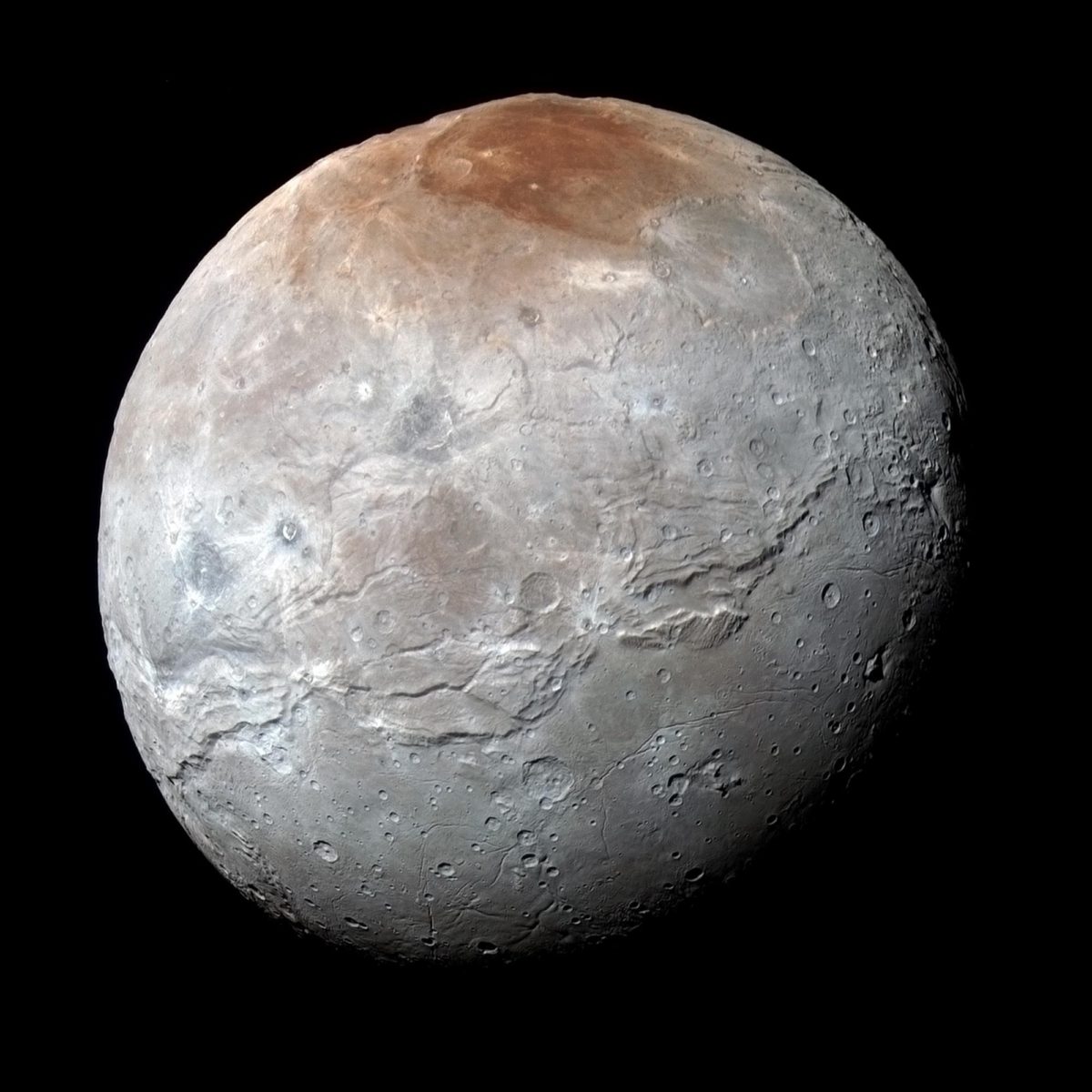Emily Lakdawalla • Oct 02, 2015
New Horizons releases new color pictures of Charon, high-resolution lookback photo of Pluto
Now that New Horizons is regularly sending back data, the mission is settling into a routine of releasing a set of captioned images on Thursdays, followed by raw LORRI images on Friday. The Thursday releases give us the opportunity to see lovely color data from the spacecraft's Ralph MVIC instrument. This week, the newly available color data set covered Charon.
Wow, what a fascinating moon! Look at how many different shades of red cross its surface. Look how different the more-cratered, higher-elevated north is from the smoother, lower south. It's a crustal dichotomy much like Mars'. Look how red Charon's pole is. Look how varicolored its craters are.

The more cool photos I see of Charon, the sadder I feel about our limited photo coverage of the Uranian moons. They're all (except Puck and Miranda) similar in size to Charon, and possess tantalizing hints of similar landscapes. But Voyager 2 flew far from any of them (except Miranda).

Another of this week's releases compares the colors of Pluto and Charon. They processed the color layers the same way for both worlds in this montage in order to show you how different are the brightnesses of Pluto and Charon -- and how similar are the colors of Charon's north pole and Pluto's dark equatorial regions. What is going on to make that happen, I have no idea.

I waited to post these until today in order that I could see what else would show up on the mission's raw image website. MVIC images are not included in the raw image releases. There were eight new photos today, all part of a high-resolution portrait of Pluto's atmosphere taken about three hours after closest approach, with Pluto about 200,000 kilometers away. I don't know if there will be more images in this portrait or not, but I've combined today's new frames with ones that were released last week to make this lovely partial portrait.

Here is a visual index of what LORRI images have been released to the raw images website so far. If you look down the right-hand side, you'll see a lot of text. At the resolution at which it's embedded, the text is not legible. But it gives you a sense of how much more we have to wait for: blue text signifies observations for which we have seen images, and gray text signifies image sets that have not yet been downlinked and released. There is so much more to come. And this is just for Pluto! Now to create a similar catalog for Charon and the other moons....

Support our core enterprises
Your support powers our mission to explore worlds, find life, and defend Earth. You make all the difference when you make a gift. Give today!
Donate

 Explore Worlds
Explore Worlds Find Life
Find Life Defend Earth
Defend Earth

